The idea of long-term travel can be a lot more appealing than the actually daily logistics. Reality is you’re switching beds, hotels, cities every three to five days and constantly travel planning so you have a place to sleep next month, next week, tomorrow. The thrill of experiencing a new place never goes away, and each new location is a new adventure. However, anyone who thinks that traveling long-term isn’t work is kidding themselves. By the middle of May, we had booked and stayed in more than 25 different hotel rooms, took more than a dozen flights, and rented numerous cars. I’m sure there were a couple of trains in there somewhere as well. In short, we were moving. When we finally got to northern Chile, we were perfectly positioned to continue into Bolivia and then on to Peru.
We didn’t necessarily want to slow down. There’s a fear of losing momentum. If we stopped, would we start again? There was also still so much to see in South America. Each time we looked at the list of tour companies for Bolivia and the itineraries, we felt a sense of dread. As we looked at rules for visiting Machu Picchu, they resembled pushing cattle through the chute to slaughter. Did we want to enter the mill and visit under those conditions? The thought of actually continuing the pace we were on was daunting. We were also faced with the fact that winter was coming to South America. While we enjoyed our high-desert explorations in Chile, it was chilly! You can’t help but notice we’re wearing winter coats and hats in most of the photos.

We were tired. We were running out of supplies–drugs, toiletries, Kind bars. Shoes and clothing were wearing out. We also had to figure out where we would spend the summer months in North America. Traveling in the summer is never a good idea, but when you’ve planned to travel for a year, it’s hard to avoid the large crowds, limited availability, and high prices of the summer travel season. Add in the pent-up demand for travel left over from COVID, and the prospects for planning the next few months of travel just got worse.
In the end, our general dislike of the cold weather won. We had to move north. Spending a couple weeks in Colorado visiting Ande’s family and stocking up on supplies seemed like a no-brainer. We also wanted to visit our friends James and Sandy in Saskatoon, Saskatchewan, Canada. Their move from Seattle, our move to Pennsylvania, and COVID had placed three years of distance between us. Visiting the Canadian prairie is only practical in the summer (see above: aversion to cold). If we were going to work our way north and pass some of June and July without breaking the bank, what were our best options? Wouldn’t a few weeks on a beach be nice?
Costa Rica seemed to be the obvious choice along the path North. We had visited 20 years before but didn’t visit the Caribbean coast. Several friends advised us away from the over development that had happened to the Pacific coast since we had visited. Quiet fishing villages and surf towns had become tourist meccas with condos and golf courses. There had to be something in the country still unspoiled by development. When we found out there was a direct flight from San Jose to Denver, we were settled. Our next path was from Chile to Costa Rica and then on to Colorado and Saskatchewan.
Congo Bongo
We searched and searched for vacation rentals in Costa Rica and frankly argued a bit about what we wanted for our two-week vacation from travel. There were plain apartments in complexes with swimming pools. We both at least agreed we wanted a house or apartment and not time in hotels. It would be nice to cook again, go grocery shopping, and maybe spend a couple evenings watching TV. The old adage that you never appreciate what you have until it’s gone applies here. A little bit of the mundane daily life we were escaping actually had a bit of appeal. We were going to take a beach vacation.
We had to consider how remote was too remote? How open was too open? How much of the jungle could we actually manage? Would we survive without air conditioning? These were all big questions because one property kept coming up in our AirBnB search that was a little different from everything else. Congo Bongo seemed to be calling, so we gave in and went for the full jungle experience.
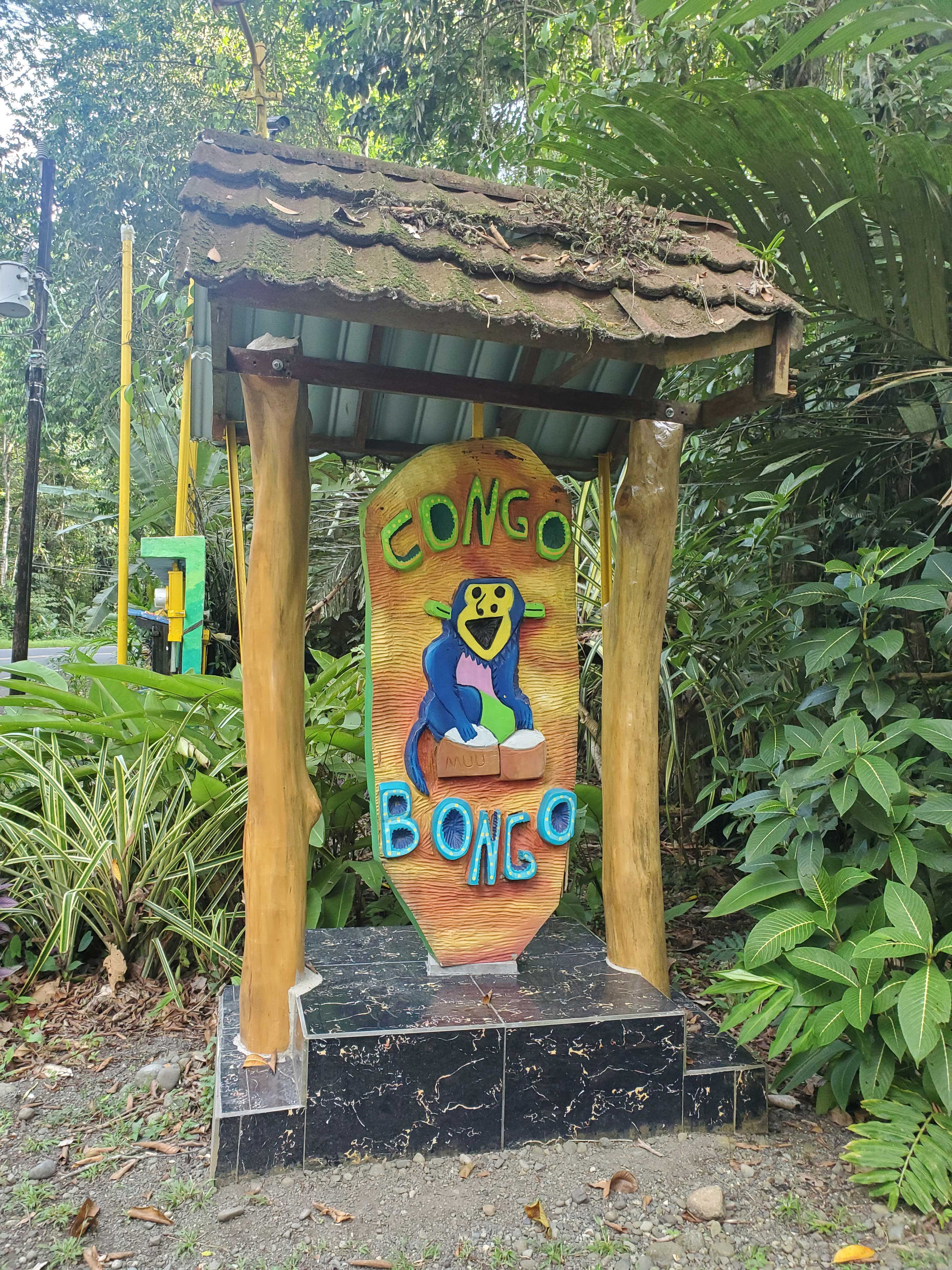
Congo Bongo is a, let’s say, neighborhood in Manzanillo, Costa Rica. It seems to be a planned resort community (total of four houses) that turned into part residential and part vacation rentals. In case you might confuse it with the multitude of other Manzanillos (Costa Rica has a problem with using the same name for multiple locations), this is the Manzanillo on the beach just a few kilometers north of Panama on the Caribbean coast. Once again, we were literally at the end of the road where it became impenetrable jungle and coastline to the Panama border.
Our jungle retreat was mostly open, with only doors and screens on the bedrooms. We slept under a mosquito net at the top of the house. There were baby locks on the trash and food cupboards to deter the. . . racoons? coatis? monkeys? (we never saw who it was, only found the results –ugh) and any other wildlife interested in poking around while we slept. Here’s the living room featuring the spiral staircase that leads up to the bedroom. The dining room and kitchen are in the background. If it looks like we were living on a porch, that’s because we were!


Here’s one of the many photos we took sitting on the futon watching the jungle in our front yard.
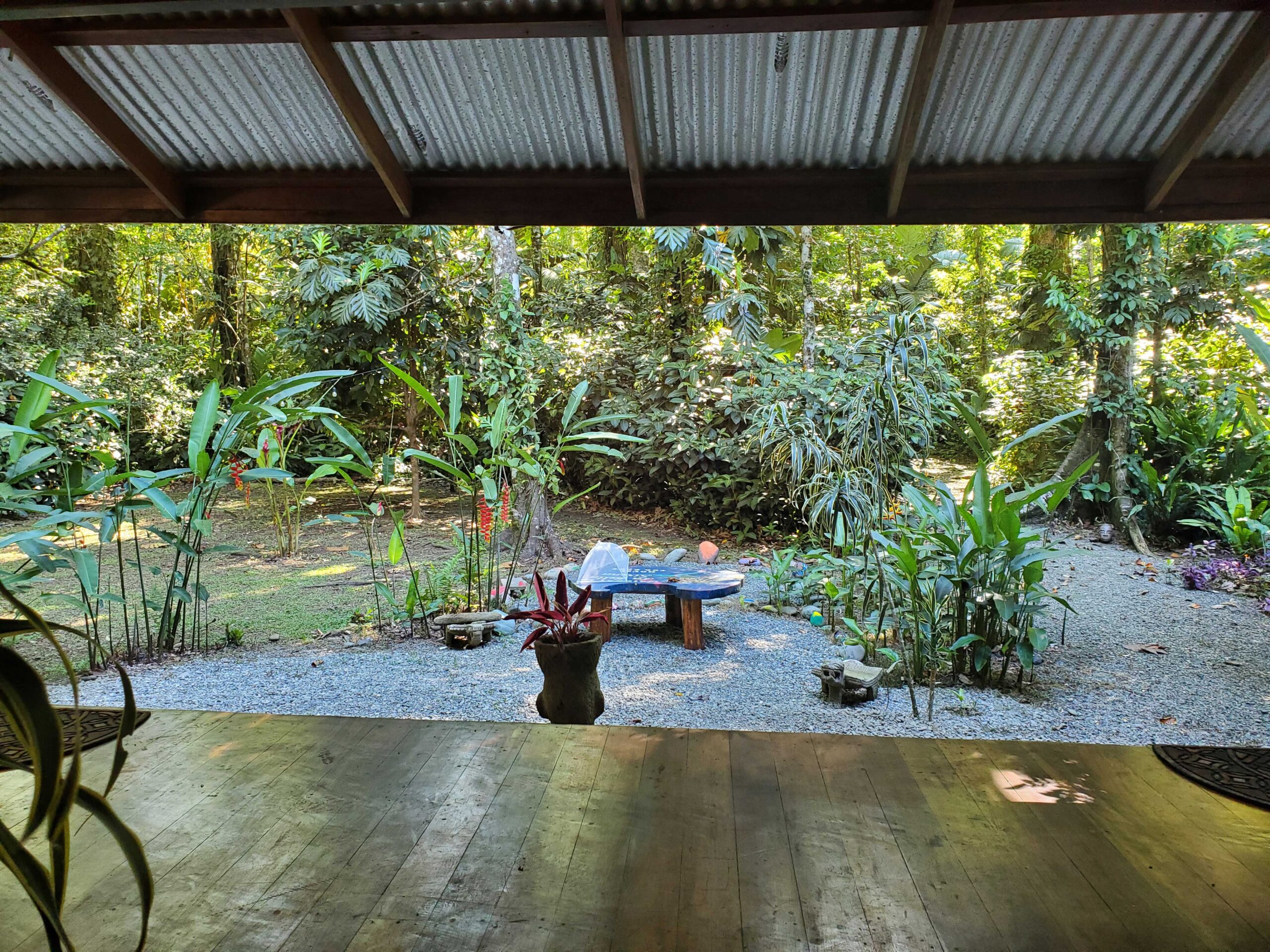
The reality of living in such an open environment in the jungle is an interesting one. There were bugs–some extremely large ones mixed in with the obvious mosquitos. Here’s a visitor we had in the bathroom on our first morning.
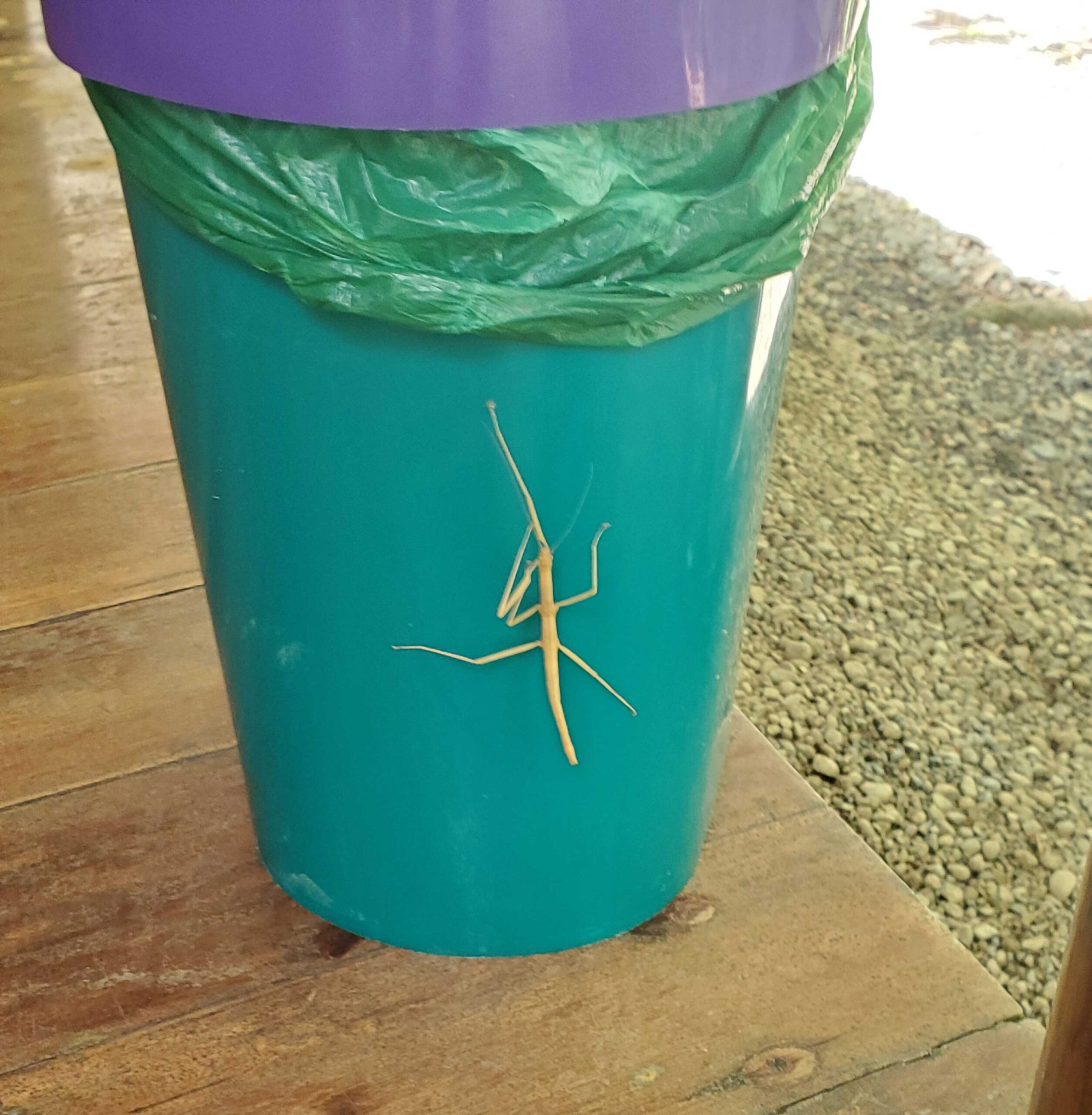
This, of course, was actually a welcome visitor. Very cool to see a stick bug. We also had a little gecko who frequented the bathroom. It was fun to see where he’d turn up each day. One night, we heard something banging around in the rafters of the bedroom and were sure it was a bat. Turned out to be a large, spectacular blue adn green sphinx moth we feared had run afoul of the ceiling fans. Luckily, when we opened the doors, it flew right off.
Bugs and animal visitors were certainly expected. What we did not expect was the full effect of all these things at once first thing in the morning. The Jungle is LOUD. Between geckos, birds, cicadas, howler monkeys and the rising sun, it was impossible to sleep past 5am. Lest you think this is hyperbole, here’s a recording we captured one of our first mornings there. The loud roaring is the howler monkeys–second loudest animal only to the mighty lion. They apparently let each other know where they are each morning to avoid any conflict between troupes. The general din in the recording is the bugs. The chirping comes from the tiny geckos in the ceiling and not birds. Of course, you can pick out some birds as well.
The Beaches
Since we were up early, we did spend many of our mornings at the local beaches, of which there were many. We found our favorite at Cocles, a few kilometers north of Congo Bongo. Here’s a spot we had to ourselves most days we visited, which is why we returned over and over. It was hot, and the shade was necessary.

Here was our view most days. There were very few people. It was amazing that such a swimmable beach was so empty.
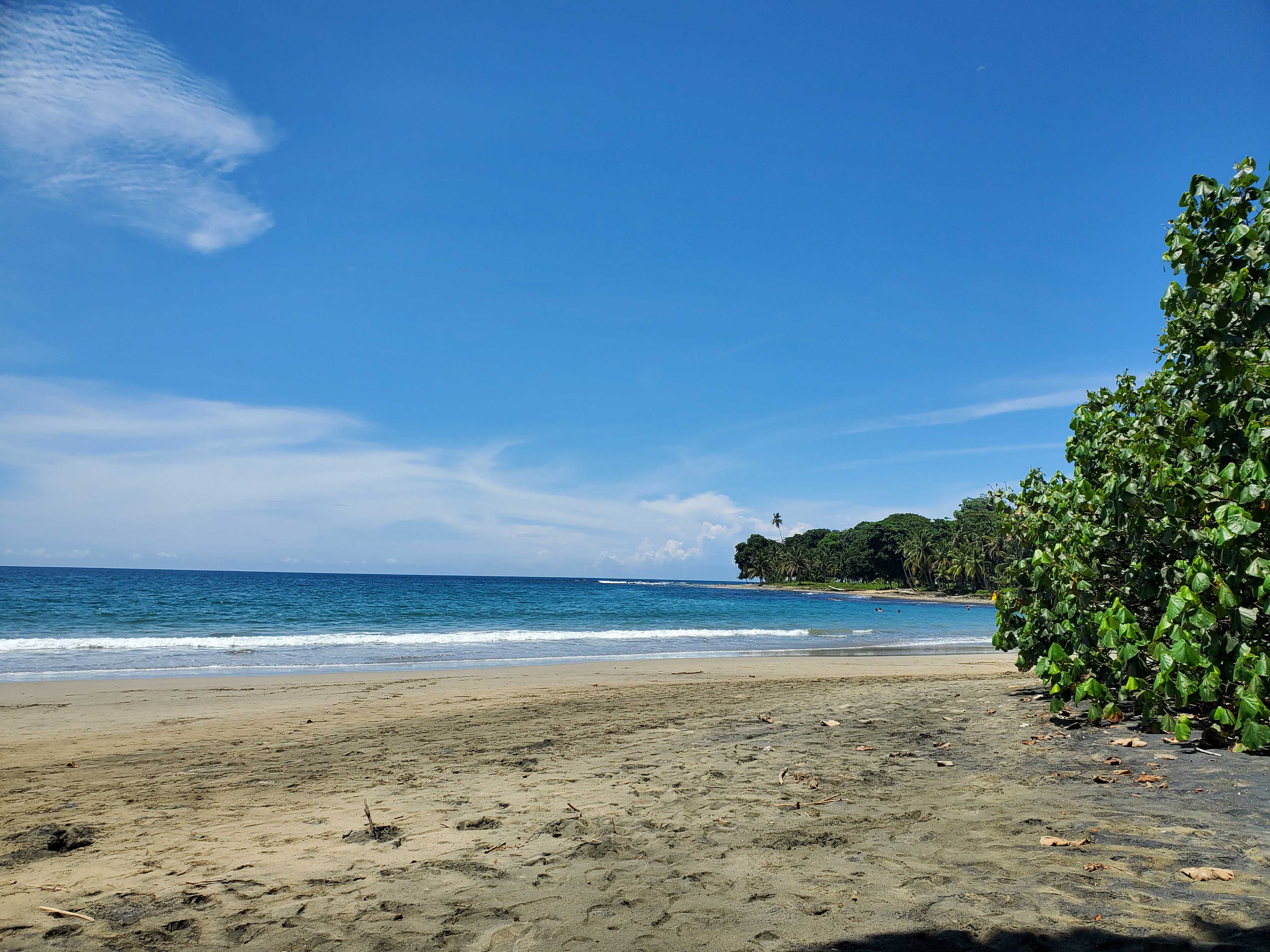
Another advantage to our little spot on the beach was also the entertainment. There were crabs everywhere, and when we weren’t reading or swimming, we were watching them work on their burrows and scurry around. I can’t even count how many photos we took.

After spending the day at Cocles, we generally went for some lunch and then back home for a shower and a nap. A really hard life. When we were hungry again, we walked down the road to Manzanillo beach for cocktails and the sunset.

Those are mango mojitos, of which we had several over two weeks. The couple who ran the Colores Restaurant were wonderful. On several occasions they brought us free dessert with our dinner, and the cocktails brought us back several times during our visit. Oh yeah, I did mention the sunset.

Enough said on that topic. It was overall a good choice for a wonderful beach experience without all the resort crowds. We were so happy we found it.
The Jaguar Rescue Center
Just so you don’t think we spent all of our time on the beach, which was easy to do, we did also go tour and support the local animal rescue center. Tours were twice a day and always full. We had somehow managed to avoid crowds, but that doesn’t mean there weren’t plenty of tourists about in the area. We were surprised how many people showed up for the tours at the Jaguar Rescue Center. No actual jaguars at the center, and you can read on the website about the story and how it got its name. Suffice to say, locals began bringing injured animals to a local vet couple for care and rehabilitation and it became thing–a BIG thing. The center is home to hundreds of animals of all kinds. They heal and rehab those that can be released, and care for the others which are deemed unfit to survive in the wild. Volunteers lead the tours in small groups, and all proceeds support the center. Each animal had a unique case. We took lots of pictures.
This toucan had a malformed wing and couldn’t fly. His curious stare was super amusing.
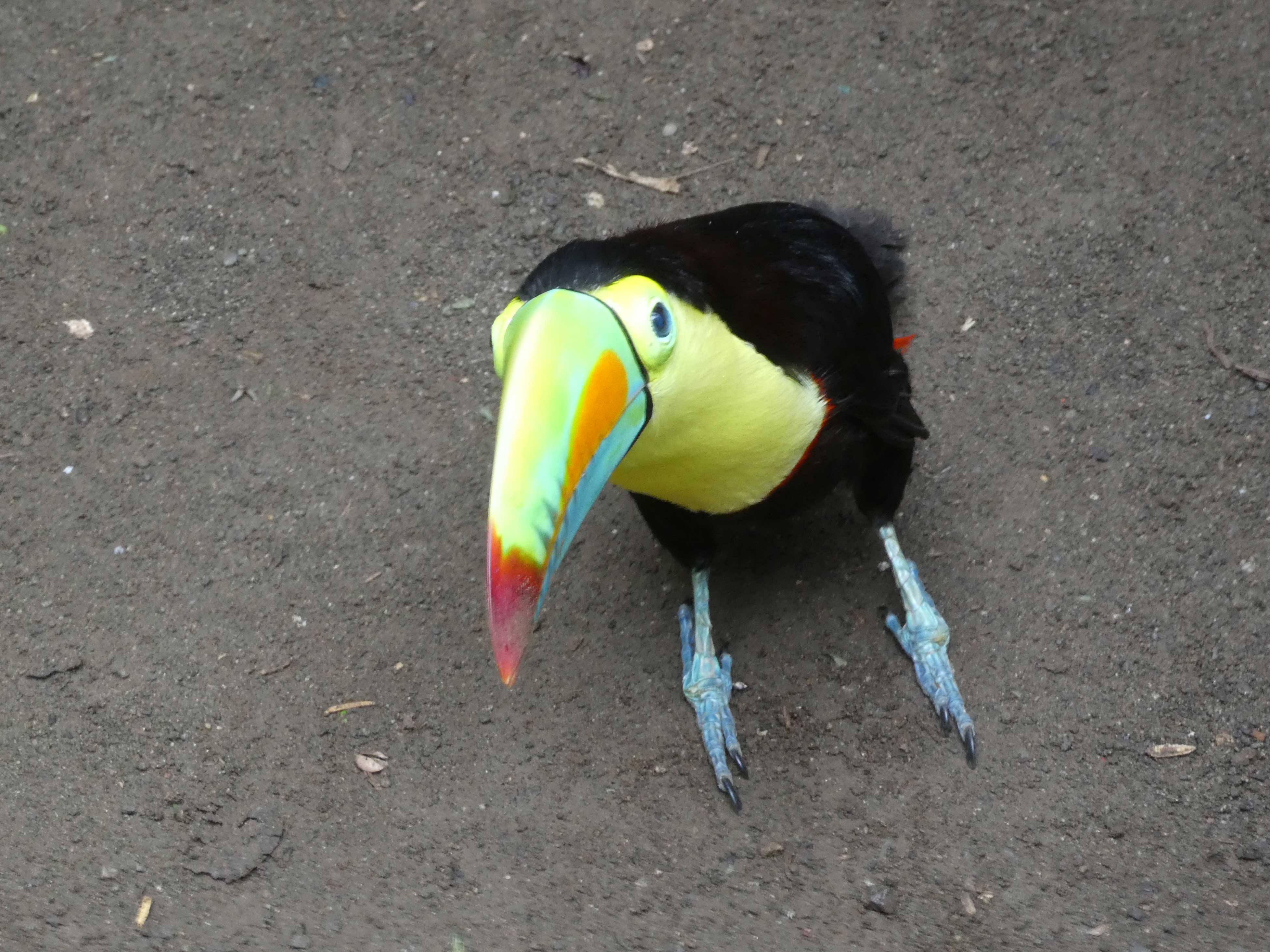
This parrot was companion to another one who was born without eyes. He and another parrot helped the blind one around the habitat. It was really amazing to watch them. Didn’t get any good pictures of them together.

We also spent quite a bit of time watching this pair, a scarlet and green macaw, who chased each other around the habitat.

One particular heart-melter was a two-toed sloth who was undersized. Don’t remember exactly why she was in the habitat, but nothing was cuter than to see her snuggle up with her teddy bear.

We of course spent some time watching her. Here’s another view as she was eating leaves.
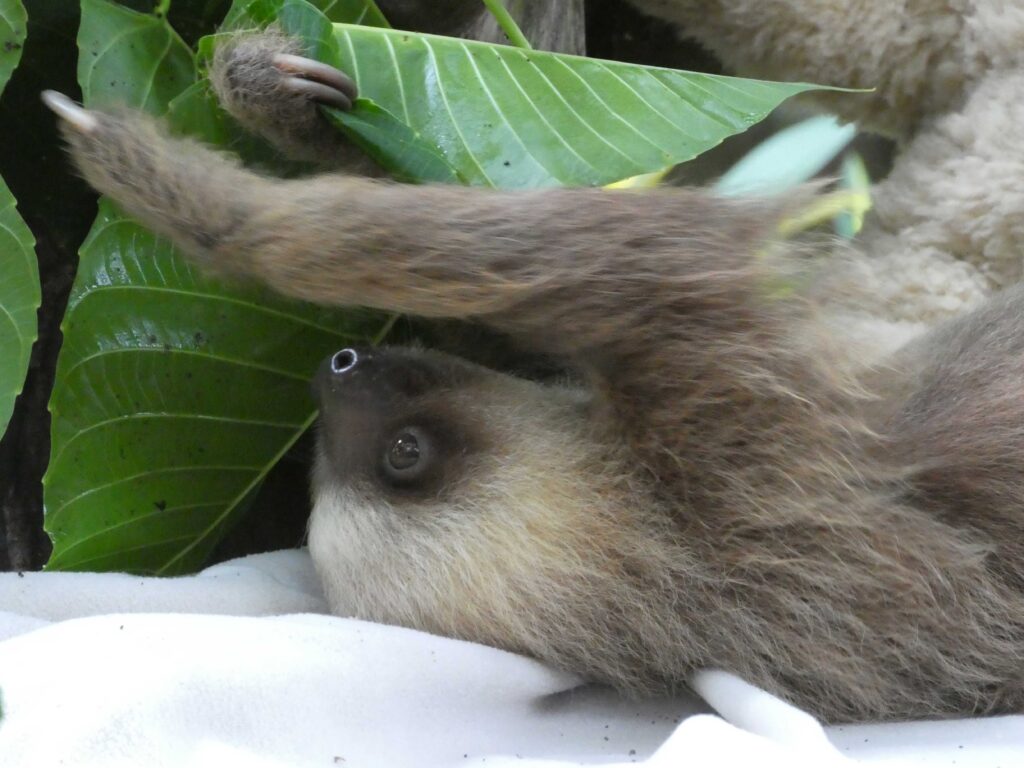
There were many, many animals at the center, each with a unique rescue story. For one reason or another, each of the animals pictured could not be released back into the wild, but could not have found a better home. One interesting fact, you might notice that there are no people in any of the photos. Costa Rica made it illegal to take or post photos of people with wild animals to prevent exploitation. The Center was very careful to make visitors understand that these were rescue animals and that no selfies with the animals were allowed.
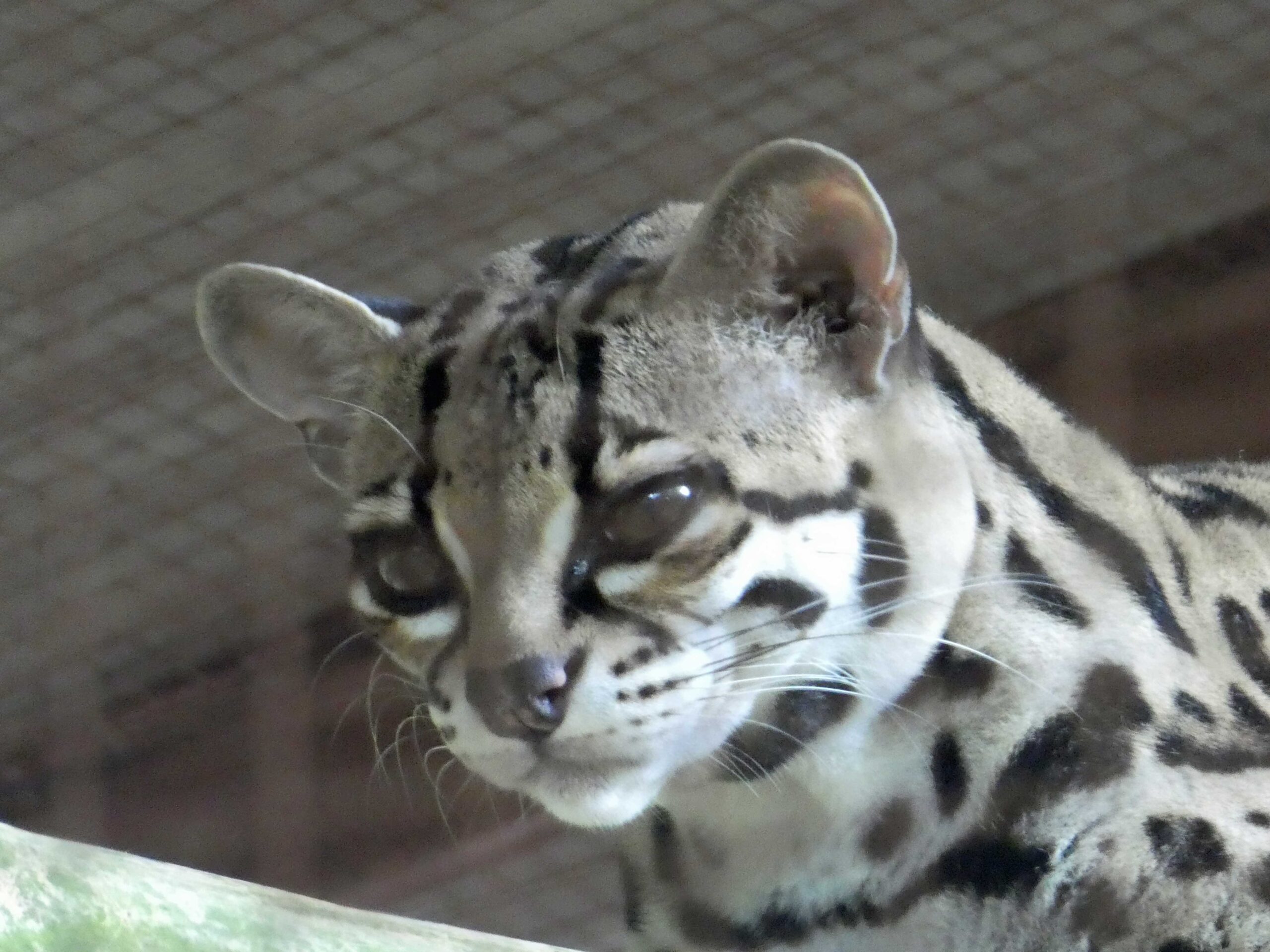
This rather mischievous margay aptly named Diabolito (little devil) was rehabilitated and released, but kept coming back. When they discovered that he had fed on other rescue animals, that marked the end of his freedom. He’s now a resident and one of the main attractions. He has an awesome side room in his enclosure where he is able to hunt mice and other critters to keep him amused. This side activity was not part of the tour . . .
After we left Congo Bongo and Manzanillo, we spent another week traveling to Tortuguero, La Fortuna and Lago de Arenal. Watch for more on that and our current Canadian adventures. Just so we don’t favor the mammals, here’s a couple of amphibians to wrap up the post.

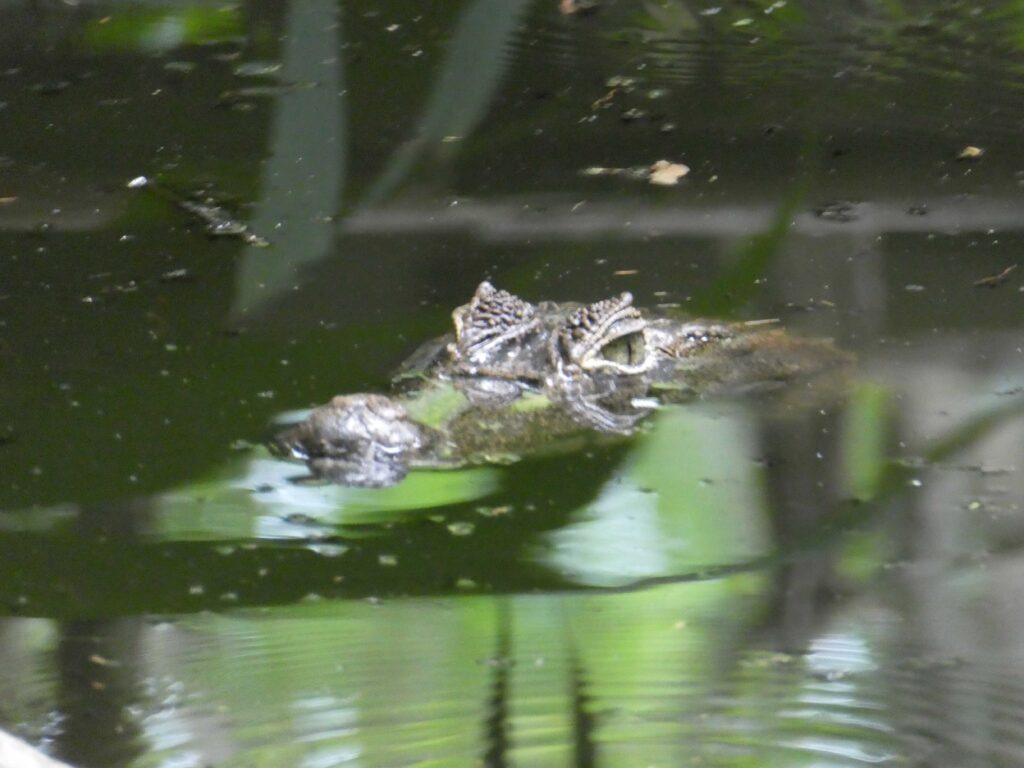
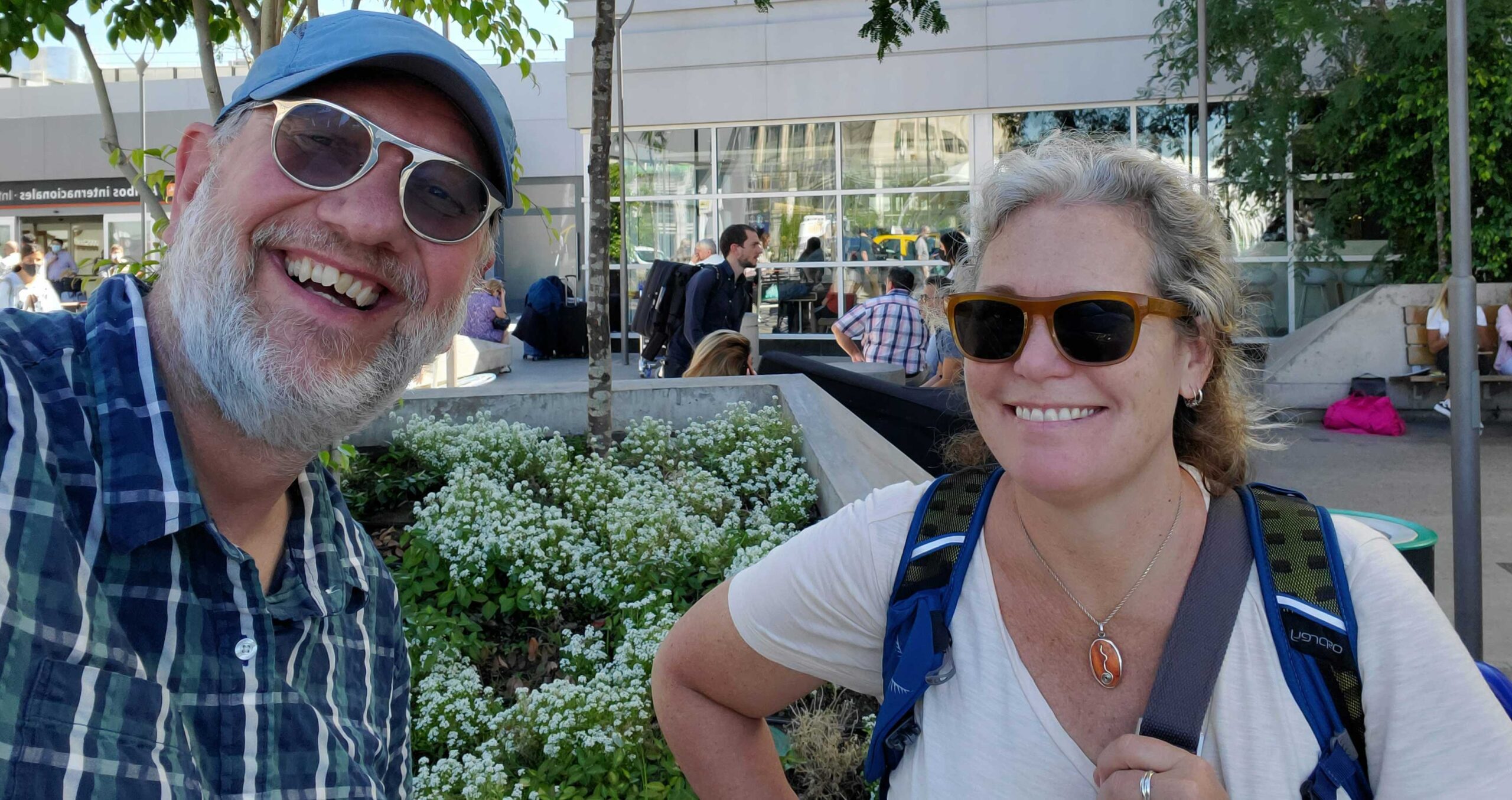
Beautiful – love the tropical colors – so different from your Argentina and Chile posts!
I would love that break in the jungle. I loved what I did see in Costa rica. Volcano and jungle.
No beach .🤔
Pics beautiful !!
Aha, found an explanation of you continental transition. I can imagine how traveling is exhausting. Glad you got some relaxation time. Love the audio of the jungle! Your apartment looks gorgeous.